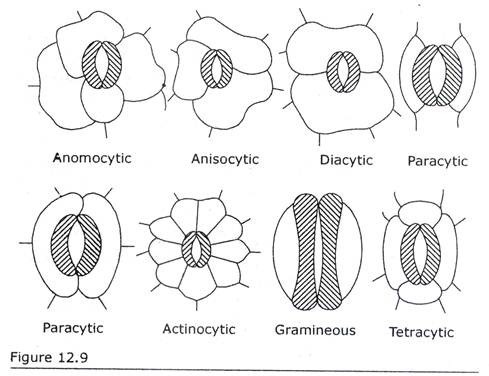Lakes in temperate latitudes exhibit marked seasonal temperature changes which may be described as follows:
Winter:
During winter the coldest water forms ice at 0°C (32°F) and floats at the surface.
The water at increasing depth below the ice is progressively warmer and denser. The heaviest water, at the bottom of the lake, has a winter temperature of 4°C and throughout winter the water remains relatively stable.
Spring:
Following the ice melt, the surface water gradually warms to 4°C. At this point the water column is nearly isothermal, i.e., all the water is of uniform temperature and density. Hence, the strong spring winds cause considerable stirring, which results in a complete mixing of water, dissolved oxygen, and nutrients from the lake surface to the lake bottom, a phenomenon known as the spring overturn or spring turnover As the spring progresses, however, the surface waters naturally become warmer and lighter than the water at lower levels, as a result, the lake becomes thermally stratified into the following three zones (Fig. 4.10).
(a) Epilimnion:
The upper stratum, which usually has the highest dissolved oxygen concentration and is characterized by a temperature gradient of less that 1°C per metre of depth, is the epilimnion (literally the “upon-lake” or the “upper lake”). This stratum contains more or less uniformly warm, circulating, and fairly turbulent water.
(b) Hypolimnion:
The lower stratum of water characterized by a temperature gradient of less than 1°C per metre of depth is the hypolimnion (literally the “lake below” or “Bottom Lake”). This part contains more dense, cooler, and relatively quiet water.
(c) Metalimnion:
It is the transitional stratum of marked thermal change between the epilimnion and hypolimnion. The middle layer of the lake, characterized by a temperature gradient of more than 1°C per metre of depth is the thermocline. The term thermocline refers to the plane or surface of maximum rate of decrease of temperature in the metalimnion (Wetzel, 1983).
The depth at which the thermocline forms is not fixed, being determined by the degree of solar heating, the transparency of the water, and the morphometry of the lake, but wherever it forms it effectively divides the lake into two layers, the upper epilimnion, and the lower hypolimnion. This division is not merely an interesting physical phenomenon but it has consequential effects on the ecology of the lake.
The epilimnion is well lit and oxygenated with sufficiently high temperatures to promote algal productivity and hence to support zooplankton and fish. When nutrients are in ample supply, algal growth is accelerated and blooms may occur. By contrast the hypolimnion is cold, dark and becomes progressively deoxygenated as the decaying remains of organisms sink down from the epilimnion.
Conditions in the hypolimnion may become so extreme that anoxia follows after which the biological productivity becomes least. Under less extreme conditions the epilimnetic material provides an energy source for benthic invertebrates. The sinking of dead algae and zooplankton from the epilimnion not only contributes to the potential deoxygenation of the hypolimnion but also prevents immediate recycling of nutrients. Nutrient depletion may become so high that algal growth is limited.
Summer:
Unless the lake is very clear and permits photosynthesis, the hypolimnion frequently becomes depleted of oxygen in summer because of the biological oxygen demand of bacterial decomposers, the reduced photosynthetic activity, and the minimal mixing with upper waters as a result of density differences (Fig. 4.11).
 Autumn:
Autumn:
At the end of thermal stratification the surface waters of the epilimnion gradually cool as a result of conduction, evaporation and convection. Now the lake attains temperature uniformity from top to bottom. Because the water is now also of uniform density, it becomes well mixed by wind and wave action, a phenomenon known as the fall overturn or fall turnover As a result, the nutrients, dissolved oxygen, and plankton become uniformly distributed.
Winter:
As the winter approaches, the lake gets colder until the water attains a uniform temperature of 4°C at which it has maximal density. As the surface cools below it becomes lighter. Eventually the surface water may freeze at 0°C. During the winter season, the ice cover forms on the surface and in such ice-bound lakes there exists an inverse stratification of water temperature, with the coldest water (ice) at the surface and the warmest water (4°C) on the bottom.
Lakes undergoing complete circulation in spring and autumn separated by thermal summer stratification and winter inverse stratification are called dimictic lakes (Wetzel, 1983). Such lakes are quite common among temperate lakes of moderate size.
